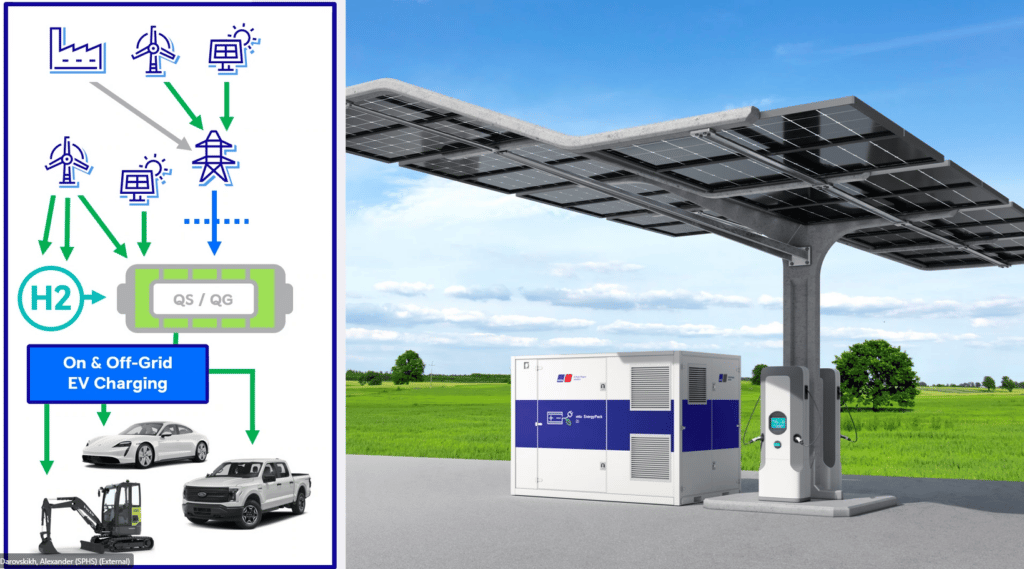The transition to green power sources such as solar and wind energy is becoming increasingly important as the world works to reduce its dependence on fossil fuels and mitigate the impacts of climate change. However, the integration of green power into microgrids, can be challenging. In this article, we will discuss some of the challenges of green power and why traditional power generators are still required to ensure a stable microgrid solution.
Challenge #1: Intermittency
Green power can’t always guarantee continuous power. For example, solar and wind power, are dependent on weather conditions, and their output can fluctuate greatly. This can make it difficult to predict and match the power demand of the microgrid, leading to power outages and a lack of reliability.
One of the ways to overcome this challenge is through energy storage solutions such as batteries. Batteries can store excess energy when it is available and release it when it is needed. However, this brings its own set of challenges. Current energy storage technologies are still relatively expensive, and the cost of energy storage is still a barrier to adoption.
Challenge #2: Low-Capacity Factor
The capacity factor is a measure of how much of a power plant’s potential power generation is actually used. For example, a power plant with a capacity factor of 50% means that it is only generating power for half of the time. Green power sources such as solar and wind have relatively low-capacity factors because they rely on weather conditions, which can greatly affect their output. This can make it difficult to depend on green power as the primary source of energy in a microgrid. With this, additional traditional power generators are required to ensure a stable microgrid solution.
Challenge #3: Cost
The cost of green power, particularly wind and solar, has been decreasing significantly in recent years, however, it is still more expensive than traditional power generation for two reasons:
- Low capacity factor: E.g. a 5MW solar farm may have a capacity factor 30-40%, meaning 60-70% of the time, the plant may be generating little to no power.
- There needs to be a backup power, or energy storage, solution for the low capacity hours increasing the overall cost of green power.
The microgrid design needs to be optimized to balance the green power supply with traditional power supply while keeping the overall cost as low as possible. The cost-effectiveness of a microgrid will depend on the specific conditions and requirements of the microgrid, and it is important to work with experts to evaluate the various options and find the most cost-effective solution.
Overcoming These Challenges
To overcome these challenges and ensure a stable microgrid solution, traditional power generators such as natural gas and diesel generators can be used to supplement the power generated by green power sources. These traditional power generators can provide a reliable and consistent source of power, which can help balance out the fluctuations in power output from green power sources. Additionally, these traditional generators are usually able to respond quickly to changes in power demand and can act as a backup power source if the green power sources are not able to meet the demand. These traditional sources of power can also be used to reduce a company’s environmental impact if fuel blending with biogas is used for the natural gas generator or HVO is used for the diesel generator.
Biogas and Fuel Blending
- One of the main benefits of fuel blending is that it allows for the reduction of greenhouse gas emissions. Biogas, which is produced from the decomposition of organic matter, is a renewable source of energy that is considered to be carbon neutral. When it is blended with natural gas, which is a fossil fuel, the overall carbon footprint of the fuel is reduced. This can be particularly beneficial for organizations that are looking to reduce their environmental impact and meet sustainability goals.
HVO, or Hydrotreated Vegetable Oil
- This is a renewable diesel fuel that offers a number of benefits when compared to traditional diesel fuel. It is made from biomass sources such as vegetable oils and animal fats, and can be used in any diesel engine without modification. HVO produces significantly less emissions than diesel fuel, including fewer greenhouse gases and particulate matter. Additionally, it has a higher cetane number than regular diesel, resulting in improved engine performance and fuel economy. It also has a lower sulfur content which is a beneficial for maintenance of vehicles. Overall, using HVO as a diesel fuel alternative can lead to a more sustainable and efficient transportation system.
Conclusion
While green power sources offer some environmental benefits, their integration into microgrids can be challenging due to their intermittency and low capacity factor. Traditional power generators, such as natural gas and diesel generators, may still be required to ensure a stable microgrid solution. However, cost needs to be carefully considered when integrating the two sources together. Traditional power generators can provide a reliable and consistent source of power, which can help to balance out the fluctuations in power output from green power sources. As previously mentioned, it’s important for organizations to work with experts to evaluate the options and find the most cost-effective and stable microgrid solution.
Learn more about Microgrids HERE.

